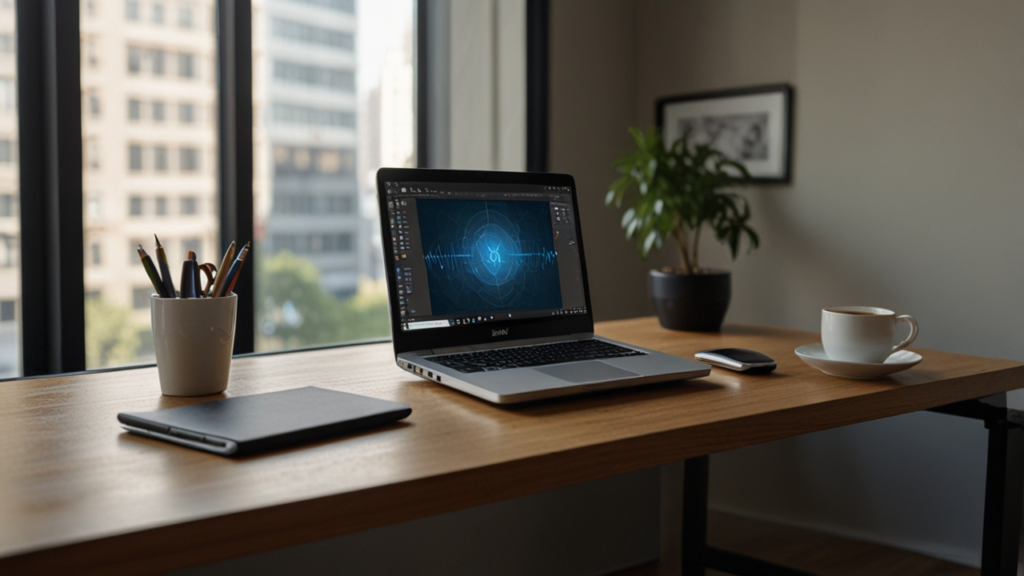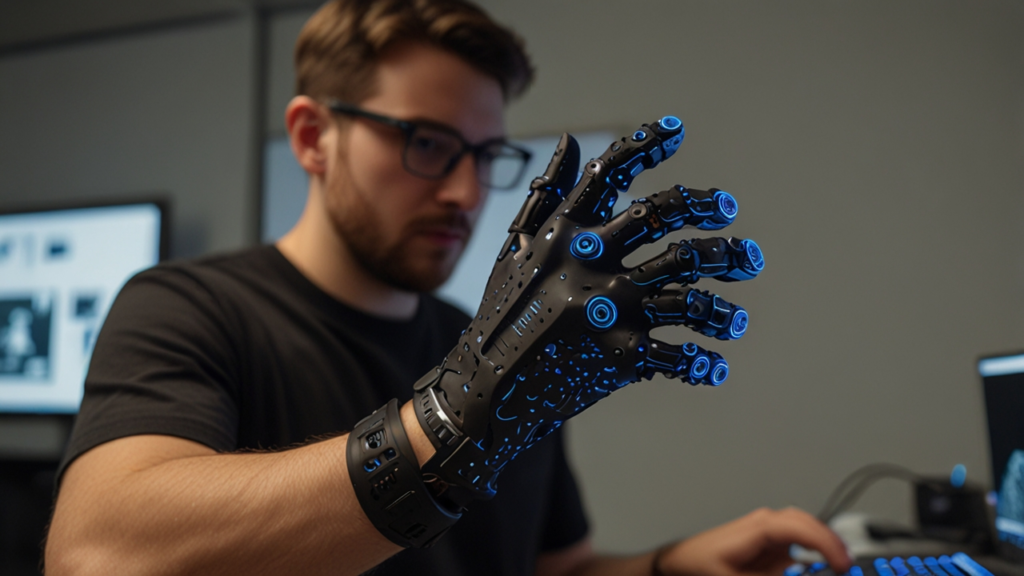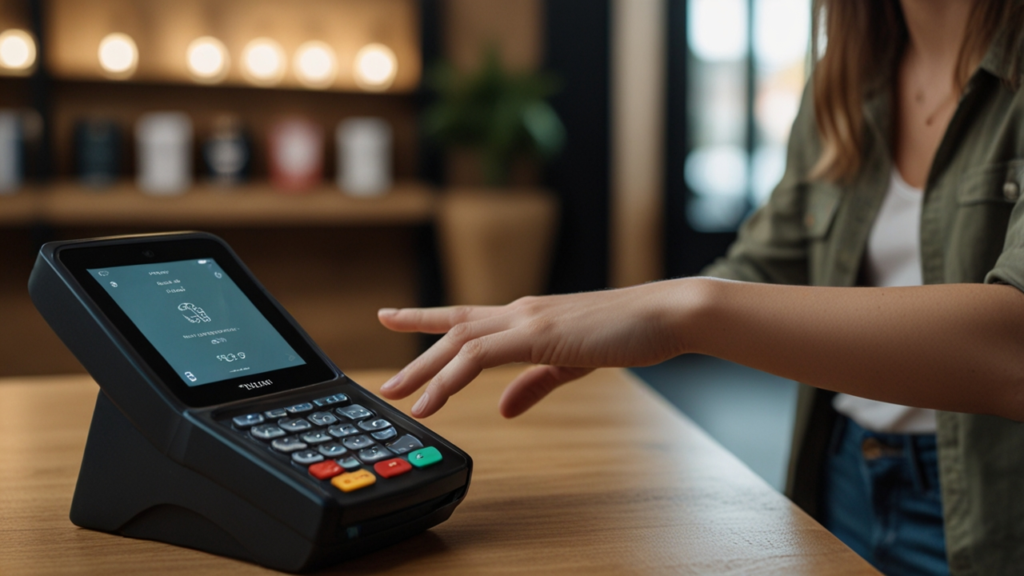Laptop: 8 Computing Advantages
Table of Contents
Modern computing devices have drastically transformed the way we work, learn, and entertain ourselves. Among these devices, the portable unit that fits neatly into our daily routines is an indispensable tool in countless environments. Its lightweight yet powerful design has been refined over decades through innovation and competition.
This article walks you through a comprehensive exploration of this essential device—from its early experimental prototypes to the state-of-the-art models that shape today’s digital landscape. The discussion spans historical milestones, technological advancements, and varying applications that widen its appeal.
As you read, consider the evolution of this device against its changing role in society. The narrative is not only informative but also interactive, prompting you to reflect on how you use technology in your own everyday life. Share your experiences and insights along the way.
Introduction to laptop
Defining the Modern Device
The device we call a laptop represents a milestone in digital portability and convenience. Over the years, it has become synonymous with mobile productivity, adapting from heavy, clunky prototypes to sleek, refined machines. In its early days, products such as the IBM 5100 and Osborne 1 marked the beginning of a revolutionary era. Today, its design encompasses a battery-powered, compact unit that meets the diverse needs of education, work, and entertainment.
Using advanced processors, integrated graphics, and robust connectivity options, the device offers a range of applications—from high-performance computing to leisure activities. As you discover the journey of this technology, ask yourself: how has your own experience with these devices evolved over time?
For more insights, check out this New Gadgets tag link that provides updates on emerging technologies. Have you noticed changes in how you rely on this versatile machine?
Technology Milestones and Key Features
The journey from the bulky units of the 1970s to today’s streamlined models is marked by significant technological breakthroughs. Early innovations such as the integration of a built-in screen and keyboard were fundamental in transitioning from desktop-dependent computing to true portability. With breakthroughs in battery technology, improved display resolutions, and advances in processing power, the device now supports video conferencing, advanced multimedia editing, and even gaming.
Modern models emphasize sustainability and energy efficiency, with major manufacturers incorporating recyclable materials and improved battery life. According to a detailed study on the history of laptop development available at milestone timeline [Wikipedia], one can see how these key features influenced overall market trends. What key improvement has impacted your daily usage the most?
Feel free to comment below with your thoughts and experiences regarding these technological milestones and features.
Evolution and History of laptop
Early Developments and Regional Innovations
The evolution of the device is best understood by revisiting its early developments during the 1970s to 1990s. The IBM 5100, weighing an impressive 55 pounds, paved the way despite not meeting current expectations of mobility. Soon after, the Osborne 1 and Epson HX-20 set industry benchmarks by combining a built-in display and keyboard, making these devices more accessible to the public.
Regional contributions further accelerated its global spread. Japan, with innovators like Toshiba and Sony, led early adoption while South Korea’s Samsung and LG refined the designs to yield lighter and higher-performance models. Major brands in the Americas and Europe, such as IBM, Apple, Dell, and Lenovo, pushed these innovations into mainstream markets. Can you imagine a time when such portability was unimaginable?
Learn more about historical breakthroughs by exploring this Mobile Technology tag link available on our site.
Key Milestones and Industry Impacts
Several key milestones shaped the device’s journey from rigid, heavy-laden units to the thin and powerful models of today. The transition was marked by innovations such as the first true notebook—the Compaq LTE, which came in under 7 pounds. Additional breakthroughs like the ergonomically designed Apple PowerBook 100 and the robust IBM ThinkPad 700C further refined user experiences by integrating color displays and enhanced build quality.
These milestones not only highlight technological advancements but also illustrate the market’s growing demand for ultra-portable machines. Industry sources, including the Dell customer stories [Dell], reveal how advancements fostered a strong market presence and solidified the device’s role in diverse sectors. Which historical innovation resonates most with you?
Reflect on these changes and share your perspective about the evolution of this indispensable machine.
How portable computer Enhances laptop
Boosting Productivity on the Go
The concept of portable computing revolutionized the way business and educational tasks are performed. The incorporation of portability elements into computing technology ushered in an era of mobile productivity—one that allows users to work from virtually anywhere. Enhancements such as built-in battery systems, lightweight designs, and sophisticated connectivity options play a crucial role in this transformation.
Recent models now frequently come equipped with enhanced video conferencing capabilities, solid-state drives, and AI integration (like Microsoft’s Copilot+ PCs from 2024). These enhancements ensure that users are never tied down to a single location, boosting overall efficiency. As detailed in various industry reports, including insights from video timelines of evolution [YouTube], such architectural changes have redefined mobile work environments. How do these productivity enhancements impact your day-to-day tasks?
Interested in further innovations? Visit the Technology Reviews section to read more.
Incorporating Advanced Connectivity and Security
With the advent of enhanced wireless technologies such as Wi-Fi 6/6E, Bluetooth 5.x, and even 5G integration, users experience remarkable stability and speed in connectivity. Advanced security features have also become a hallmark of modern portable computing. Biometric authentication methods—fingerprint and facial recognition—complement the device’s secure boot and hardware encryption, ensuring that sensitive data remains protected.
Regional innovations have contributed significantly to this advancement, particularly in Asia where miniaturization and improved battery technologies are prioritized. Leading technological clubs and research institutions have validated these changes using robust data and comparative studies available through sources like Lenovo case studies [Lenovo]. What are your thoughts on the security enhancements provided by these modern features?
Share your opinions and join the discussion in the comments section.
notebook computing Systems and Their Applications
Application in Education and Remote Work
The impact of notebook computing systems on education and remote work cannot be overstated. Over the past few years, schools, colleges, and corporations have significantly leveraged these systems to facilitate remote learning and flexible work arrangements. For instance, during the COVID-19 pandemic, companies such as Dell played a vital role in supplying devices that supported remote education and work continuity.
A case study from Lancaster University exemplifies how these systems foster sustainable, high-performance computing environments via strategic partnerships and infrastructure investments. Through a balance of robust system capabilities and portability, users could engage in digital transformation with ease. Does this remind you of a time when remote work reshaped your professional routine?
Discover more regarding the evolving academic landscape in the New Technology Products section on our website.
Enhanced Multimedia and Creative Applications
Besides work and education, these systems have a substantial influence on multimedia production and creative applications. The evolution of high-resolution screens, OLED technology, and improved graphics capabilities has enabled professionals and creatives to develop high-quality visual content. These advancements have transformed the device into an essential tool for detailed graphic design, video production, and interactive media.
Case studies of renowned institutions demonstrate the practical applications of these creative workstations. For example, multimedia professionals now depend on these compact yet powerful systems to execute detailed projects under tight deadlines. The video history of portable computers [YouTube] further emphasizes how design and performance improvements have opened new creative avenues. How have these creative capabilities influenced your work or hobbies?
Reflect on the role of these systems in your creative pursuits and share your experiences with us.
Real-World Case Studies of laptop
Success Stories in Various Sectors
Real-world examples highlight how the device has been instrumental in diverse environments. During the pandemic, Dell provided laptops and monitors for remote learning, which significantly improved the academic experience in many countries. Similarly, Lenovo enabled digital transformations in healthcare, aiding organizations like Bristol Myers Squibb in enhancing patient care and research capabilities.
Additional case studies from Sharp/Dynabook demonstrate how hybrid teaching models and IT scalability were achieved even amidst global supply chain challenges. These successful deployments underscore the device’s adaptability across sectors. Reviewing detailed case studies, such as those available at Durabook case studies [Durabook], one observes concrete benefits in rugged performance, particularly in demanding environments like field service and defense.
How do these success stories resonate with your personal or professional experiences? What case study inspires you the most?
Comparison Table of Case Studies
Comprehensive Comparison of Case Studies
| Example | Inspiration | Application/Impact | Region |
|---|---|---|---|
| Dell Deployment | Remote Learning Need | Empowered educational institutions | USA, Europe, Asia |
| Lenovo Transformation | Healthcare Innovation | Accelerated digital transformation | Global |
| Sharp/Dynabook | Hybrid Teaching | Scalable IT solutions | Japan, USA |
| Durabook Rugged Systems | Field Service Performance | Reliable rugged performance | USA, Australia |
| IBM ThinkPad 700C | Business Innovation | Enhanced portability and security | Global |
This table clearly illustrates how various sectors have benefited from these technological deployments. For more detailed information, consider exploring the Mobile & Gadgets category to read additional product insights. What real-world examples have influenced your perception of these devices?
mobile workstation in Modern laptop Solutions
Integration in Professional Environments
The professional world has embraced the versatility of mobile workstations, which integrate the power of high-end computing with portable designs. Such systems are critical for professionals who require robust performance in fields ranging from technical design to scientific research. These devices now incorporate multi-core CPUs and AI co-processors that enable intensive applications while maintaining a light frame.
Major advancements include streamlined software integration and enhanced security protocols. The need for secure, on-the-go computing solutions has led many companies to upgrade their fleets with devices that offer both speed and reliability. This integration is well-documented in Smartphones tag discussions, which delve into cutting-edge tech in the mobile workspace. Does modern portable performance meet your professional demands?
Consider how increased mobility has transformed the workplace. Would you be open to a device that can handle production-level tasks anywhere?
Impact on Field Services and Government Applications
In sectors like field services, mining, and defense, rugged devices have become indispensable. These systems work reliably in harsh environmental conditions, providing uninterrupted connectivity and performance. For instance, the use of rugged systems by the US Air Force and field service teams demonstrates the durability required in extreme situations. Engineering improvements in these mobile workstations have led to significant reductions in downtime and increased operational efficiency.
The integration of AI-enhanced security features further ensures that these devices can fend off sophisticated cyber threats while in the field. Detailed success stories from various sources underscore the importance of durability and adaptability. How has the reliability of such devices influenced industry practices in your experience?
This trend invites you to reflect on how the blend of performance and ruggedness meets the demands of critical applications.
Future Trends: personal computer and Beyond
Emerging Technologies and Market Predictions
The future for this device is filled with exciting prospects driven by emerging technologies. Experts predict that we will see further integration of dedicated AI hardware designed to offer on-device processing, which results in better performance, improved battery life, and enhanced privacy. These technological strides are expected to propel further miniaturization and the use of flexible, foldable displays—a field already under intense research in Asia, particularly in South Korea and Japan.
Market research indicates that the number of units shipped globally will continue to increase, driven by demands from remote work, gaming, and education sectors. Industry leaders believe that these advancements will help define a new era of sustainable manufacturing, incorporating recycled materials and modular designs that facilitate easier repairs. Do you think these futuristic enhancements align with your expectations for mobile computing?
Consider how exciting it is to bridge today’s innovations with tomorrow’s breakthroughs. What emerging technology are you most looking forward to?
Regulatory and Industry Shifts
As environmental awareness rises, regulatory standards for sustainability and data security are also expected to tighten. Regions in the Americas and Europe are anticipated to lead efforts in setting rigorous guidelines that drive manufacturers toward greener practices and enhanced security features. This shift is underpinned by academic research as well as real-world data, establishing the trend toward using recycled materials and designing devices for longevity.
The collaboration between industry giants and regulatory bodies is expected to not only foster innovation but also ensure that these devices remain accessible while being produced responsibly. Staying updated on these regulatory shifts through industry resources can help professionals better understand the market landscape. How do you see regulatory changes influencing the device’s future?
Reflect on whether stricter regulations might lead you to reconsider your next purchase or upgrade in the context of sustainability and performance.
Insightful Reflections on Laptop Mastery
This section brings forth a narrative filled with creative insights and engaging reflections on the evolution and profound impact of a key mobile device. The writing explores various aspects of design, performance, and integration into professional and personal domains. Over time, the transformation from bulky, fixed machines to airy, versatile companions has opened up new opportunities for global connectivity, remote interactions, and creative expression. The progression in design and functionality has allowed users to take charge of projects with enhanced mobility—all while maintaining a strong emphasis on sustainability and durability. There is an undeniable charm in how these devices bring together power and flexibility, blending rigorous technological advancements with refined aesthetics that appeal to a wide range of users. The narrative further underlines the excitement around emerging trends such as foldable displays and advanced connectivity options. This thought-provoking stream of ideas invites you to explore the potential of transformative designs and imagine how these innovations may shape a more connected, efficient world. Embracing continuous improvement and reflecting on our digital dues can lead to a new paradigm in both work and leisure—a paradigm that resonates with the spirit of progress and creativity.
The journey outlined in this text not only celebrates technological achievements but also challenges readers to reimagine what is possible. It compels us to consider the balance between performance and sustainability, all while provoking deeper contemplation about how our everyday devices transform our lives.
FAQ
What is the history of this mobile device?
The history of this device spans several decades, beginning in the 1970s with early experimental units that evolved into sophisticated, battery-powered machines. Pioneering models and key milestones laid the foundation for modern design and functionality. For more detailed historical insights, see the Wikipedia article on the History of Laptops.
How has portability changed workplace productivity?
Enhanced portability has enabled professionals to work from virtually anywhere, leading to increased productivity and flexibility. The integration of advanced connectivity and security features has further solidified its role in remote and flexible work environments.
In what ways is design evolution evident in these devices?
Design evolution is evident through the transition from heavy, cumbersome machines to lightweight, efficient systems that feature high-resolution displays, integrated keyboards, and energy-saving battery technologies.
What future trends can we expect in this market?
Future trends include further adoption of AI hardware, foldable display innovations, sustainable manufacturing practices, and tighter regulatory standards in data security and environmental sustainability.
Are there real-world examples demonstrating the device’s impact?
Yes, various case studies from Dell to Lenovo and others illustrate successful implementations in education, healthcare, and field services, showcasing their adaptability and real impact across multiple industries.
Conclusion
In summary, the journey of this device from its early incarnations to current state-of-the-art models is nothing short of inspiring. We have seen its evolution marked by innovations that have redefined mobile productivity and creativity across various sectors. The blend of cutting-edge connectivity, robust performance, and sustainable design makes it an essential tool in our digital lives.
Engage with the community by leaving your comments below and sharing what improvements have most impacted your experience. For more information about emerging trends and technology insights, feel free to explore additional content through our links. If you have any questions or wish to share your story, please Contact us.
Have you experienced similar changes in your work or study routine? Let us know your thoughts and join the conversation!



